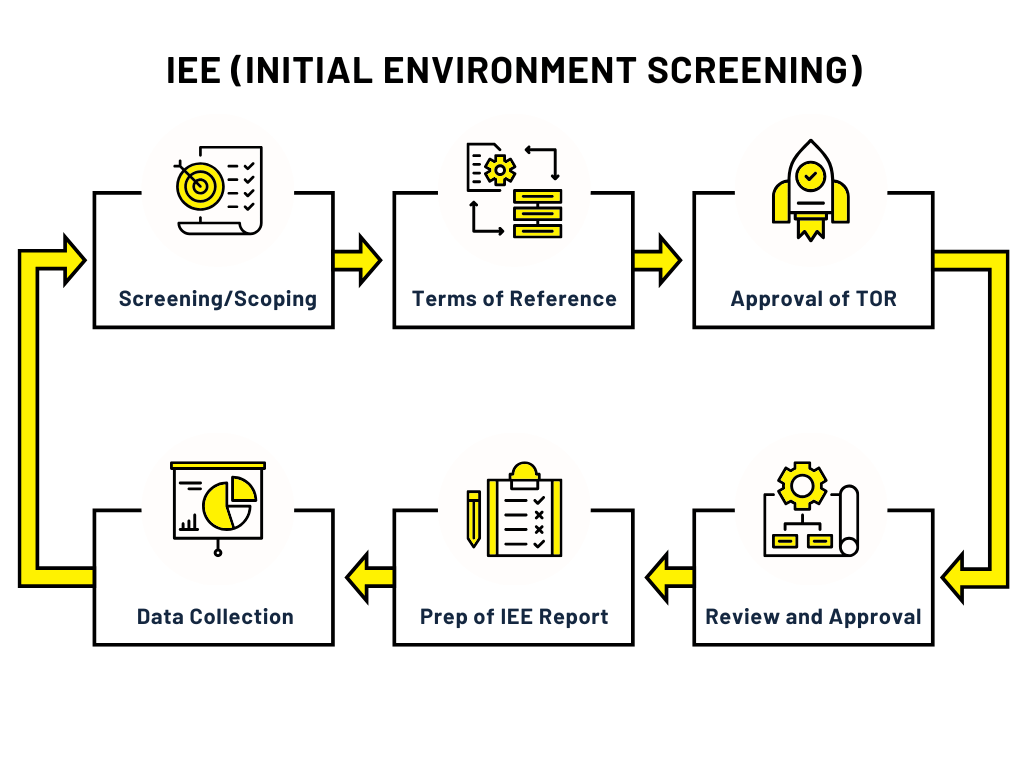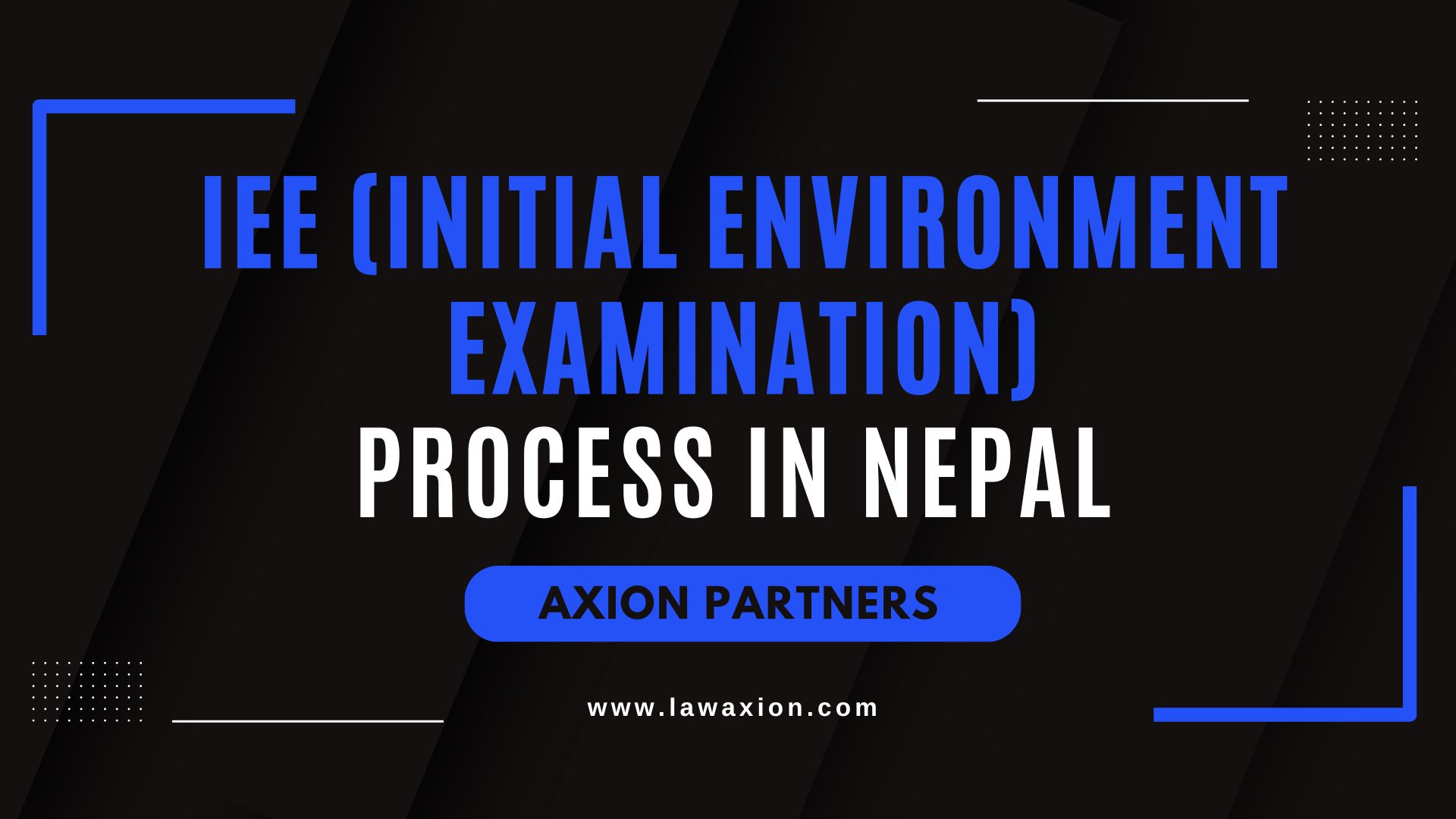Learn the complete IEE examination process in Nepal. Get expert guidance to prepare and approve Initial Environmental Examination reports for your project.
Introduction to IEE in Nepal
The Initial Environment Examination (IEE) is a fundamental environmental assessment process in Nepal. It evaluates the potential environmental impacts of proposed projects or activities before their implementation. The IEE process is governed by the Environment Protection Act 2076 (2019) and the Environment Protection Rules 2077 (2020). These legal frameworks establish the requirements and procedures for conducting IEEs in Nepal.
The primary objective of an IEE is to identify and assess potential environmental impacts, both positive and negative, that may arise from a proposed project. It aims to ensure that development activities are carried out in an environmentally sustainable manner. The IEE process helps decision-makers and project proponents understand the environmental implications of their actions and take appropriate measures to mitigate adverse effects.
Legal Framework for IEE in Nepal
The legal foundation for the IEE process in Nepal is established by the following key legislation:
- Environment Protection Act 2076 (2019)
- Environment Protection Rules 2077 (2020)
- National Environmental Impact Assessment Guidelines 1993
These laws and regulations outline the requirements, procedures, and responsibilities of various stakeholders involved in the IEE process. The Environment Protection Act 2076 provides the overarching framework for environmental protection and management in Nepal. It mandates the need for environmental assessments, including IEEs, for certain types of projects and activities.
The Environment Protection Rules 2077 further elaborate on the specific procedures and requirements for conducting IEEs. They define the types of projects that require an IEE, the content and format of IEE reports, and the approval process. The National Environmental Impact Assessment Guidelines 1993 provide additional guidance on the methodologies and best practices for conducting environmental assessments in Nepal.
What Projects require environment examination in Nepal?
In Nepal, various types of projects and activities require an IEE before implementation. The Environment Protection Rules 2077 provide a comprehensive list of projects that fall under the IEE requirement. Some examples include:
- Forest-related projects: Plantation in national forests, collection of forest products, and establishment of botanical gardens
- Industrial projects: Establishment of certain types of industries, such as dairy, vegetable oil, and processing plants
- Tourism projects: Construction of resorts, hotels, and other tourism facilities in specific areas
- Water resource and energy projects: Construction of micro-hydropower projects, rural electrification, and irrigation schemes
- Health projects: Establishment of hospitals and nursing homes with specific bed capacities
- Urban development projects: Construction of urban roads, housing developments, and solid waste management facilities
The specific thresholds and criteria for each project type are detailed in the Environment Protection Rules 2077. Project proponents must carefully review these requirements to determine if their proposed activities necessitate an IEE.
IEE Process in Nepal: Initial Environment Examination
- Step 1: Screening/Scoping of the Proposed Project
- Step 2: Preparation of the Terms of Reference
- Step 3: Approval of the Terms of Reference
- Step 4: Data Collection of Existing Environment
- Step 5: Preparation of the Final IEE Report
- Step 6: Review and Approval of the IEE Report

The IEE process in Nepal involves several key steps:
- Screening: Determine if the proposed project requires an IEE based on the criteria set in the Environment Protection Rules 2077.
- Scoping: Define the scope of the IEE study, including the key environmental issues to be addressed and the methodologies to be used.
- Preparation of Terms of Reference (ToR): Develop a detailed plan for conducting the IEE, including the study objectives, methodologies, and expected outcomes.
- Approval of ToR: Submit the ToR to the relevant government authority for review and approval.
- Baseline data collection: Gather information on the existing environmental conditions in the project area.
- Impact identification and analysis: Identify potential environmental impacts and assess their significance.
- Mitigation measures: Develop strategies to minimize or mitigate adverse environmental impacts.
- Public consultation: Engage with local communities and stakeholders to gather their input and concerns.
- Preparation of IEE report: Compile all findings, analyses, and recommendations into a comprehensive IEE report.
- Review and approval: Submit the IEE report to the relevant authority for review and approval.
Contents of an IEE Report
An IEE report in Nepal typically includes the following sections:
- Executive Summary
- Introduction
- Description of the Proposed Project
- Description of the Existing Environment
- Identification and Analysis of Environmental Impacts
- Mitigation Measures
- Environmental Management Plan
- Public Consultation and Disclosure
- Conclusions and Recommendations
- References and Appendices
Each section provides detailed information on specific aspects of the environmental assessment. The report should be comprehensive, well-structured, and supported by relevant data and analyses.
Role of Government Agencies in IEE Process
Several government agencies play crucial roles in the IEE process in Nepal:
- Ministry of Forests and Environment: Oversees the overall environmental assessment process and provides policy guidance.
- Department of Environment: Reviews and approves IEE reports for projects under its jurisdiction.
- Sectoral ministries and departments: Review and approve IEE reports for projects within their respective sectors.
- Local governments: Participate in the review process and provide recommendations for projects within their jurisdictions.
These agencies work collaboratively to ensure that the IEE process is conducted effectively and in compliance with the relevant laws and regulations.
Public Participation in IEE Process
Public participation is an essential component of the IEE process in Nepal. The Environment Protection Rules 2077 mandate public consultation and disclosure of information during the IEE study. Key aspects of public participation include:
- Public notice: Project proponents must publish a notice in a national daily newspaper, inviting public comments on the proposed project.
- Public hearing: Organize public hearings in the project-affected areas to gather local opinions and concerns.
- Information disclosure: Make the draft IEE report available for public review and comment.
- Incorporation of public feedback: Address and incorporate relevant public comments and concerns in the final IEE report.
Effective public participation ensures that the views and concerns of local communities and stakeholders are considered in the decision-making process.
Challenges in IEE Implementation
Despite its importance, the implementation of the IEE process in Nepal faces several challenges:
- Limited technical capacity: Lack of skilled professionals to conduct comprehensive IEE studies.
- Inadequate baseline data: Insufficient environmental data for accurate impact assessment.
- Time constraints: Pressure to complete IEE studies quickly, potentially compromising quality.
- Limited public awareness: Lack of understanding among stakeholders about the IEE process and its significance.
- Weak enforcement: Inadequate monitoring and enforcement of IEE recommendations and mitigation measures.
Addressing these challenges requires concerted efforts from government agencies, project proponents, and environmental professionals to strengthen the IEE process in Nepal.
Benefits of Conducting IEE in Nepal
Conducting an IEE offers numerous benefits for project proponents and the environment:
- Early identification of potential environmental impacts
- Improved project design and planning
- Enhanced stakeholder engagement and public acceptance
- Compliance with legal and regulatory requirements
- Reduced environmental risks and liabilities
- Promotion of sustainable development practices
- Informed decision-making by authorities and project proponents
These benefits contribute to more environmentally sustainable and socially responsible project implementation in Nepal.
Differences Between IEE and EIA in Nepal
While both IEE and Environmental Impact Assessment (EIA) are environmental assessment tools, they differ in scope and complexity:
- Scale of assessment: IEE is typically conducted for smaller projects with potentially less significant environmental impacts, while EIA is required for larger projects with potentially more significant impacts.
- Depth of analysis: IEE involves a less detailed analysis compared to EIA, which requires more comprehensive studies and data collection.
- Time and resources: IEE generally requires less time and fewer resources to complete than EIA.
- Approval process: IEE approval is often faster and involves fewer administrative steps compared to EIA.
- Public participation: While both processes involve public consultation, EIA typically requires more extensive public engagement.
Understanding these differences helps project proponents determine the appropriate level of environmental assessment required for their projects.
Recent Developments in IEE Process
The IEE process in Nepal has undergone several recent developments:
- Digitalization: Introduction of online submission and tracking systems for IEE applications.
- Capacity building: Increased efforts to train environmental professionals and government officials in IEE methodologies.
- Sectoral guidelines: Development of sector-specific guidelines for conducting IEEs in various industries.
- Integration with SDGs: Alignment of IEE processes with Nepal’s commitment to the Sustainable Development Goals (SDGs).
- Enhanced monitoring: Strengthening of post-approval monitoring mechanisms to ensure compliance with IEE recommendations.
These developments aim to improve the efficiency, effectiveness, and relevance of the IEE process in Nepal’s evolving environmental and developmental context.
Conclusion
The IEE process plays a vital role in promoting environmentally sustainable development in Nepal. By systematically assessing the potential environmental impacts of proposed projects, IEEs help balance development needs with environmental protection. While challenges remain in its implementation, ongoing efforts to strengthen the IEE process demonstrate Nepal’s commitment to sustainable development. As the country continues to grow and develop, the IEE process will remain a crucial tool in ensuring that economic progress does not come at the cost of environmental degradation.
What is IEE in Nepal?
IEE (Initial Environmental Examination) in Nepal is a preliminary assessment process used to identify potential environmental impacts of smaller-scale projects. It evaluates the project’s possible effects on the environment, helping to decide whether a full EIA is needed.
What are the 7 steps of EIA?
1. Screening
2. Scoping
3. Impact assessment
4. Mitigation measures
5. Environmental management plan
6. Public consultation
7. Reporting
How many stages are there in EIA in Nepal?
In Nepal, the EIA process typically involves four stages:
1. Screening
2. Scoping
3. Impact analysis
4. Reporting
What is the basic EIA process?
Step 1: Determine if the project requires an EIA.
Step 2: Define key issues and impacts.
Step 3: Analyze potential environmental effects.
Step 4: Identify steps to reduce impacts.
Step 5: Track environmental performance post-implementation
READ MORE: REGISTRATION OF SOCIAL MEDIA PLATFORM IN NEPAL
Read More

